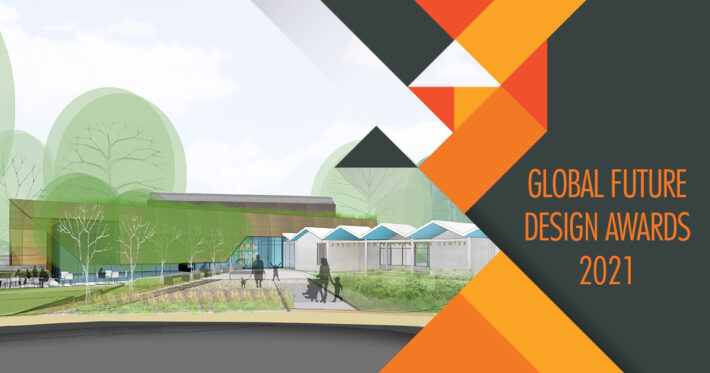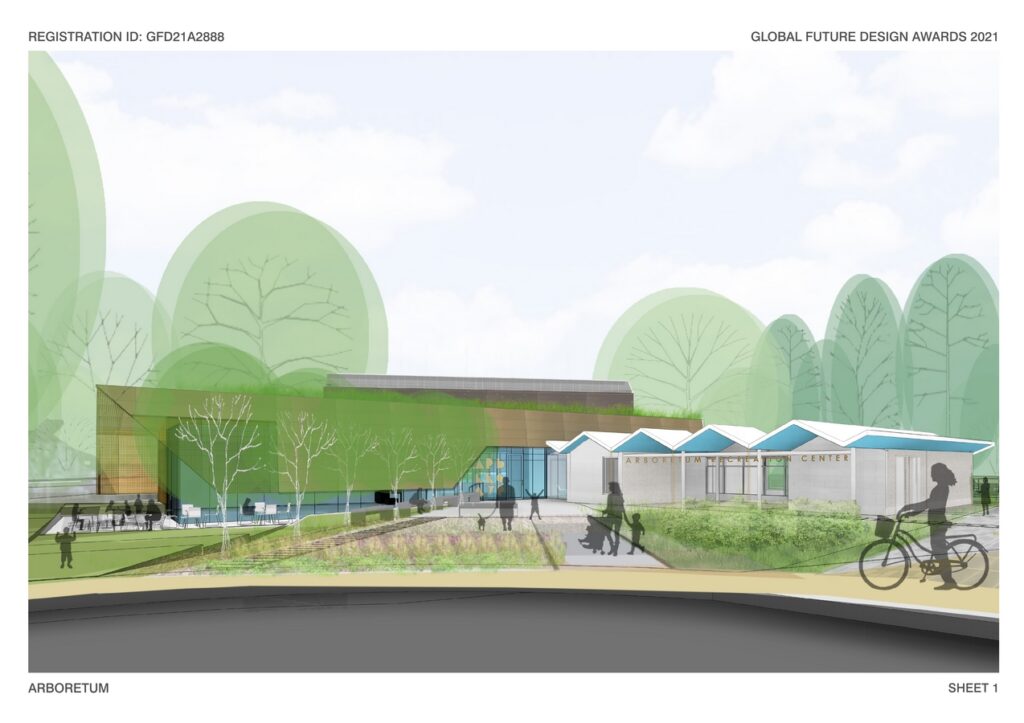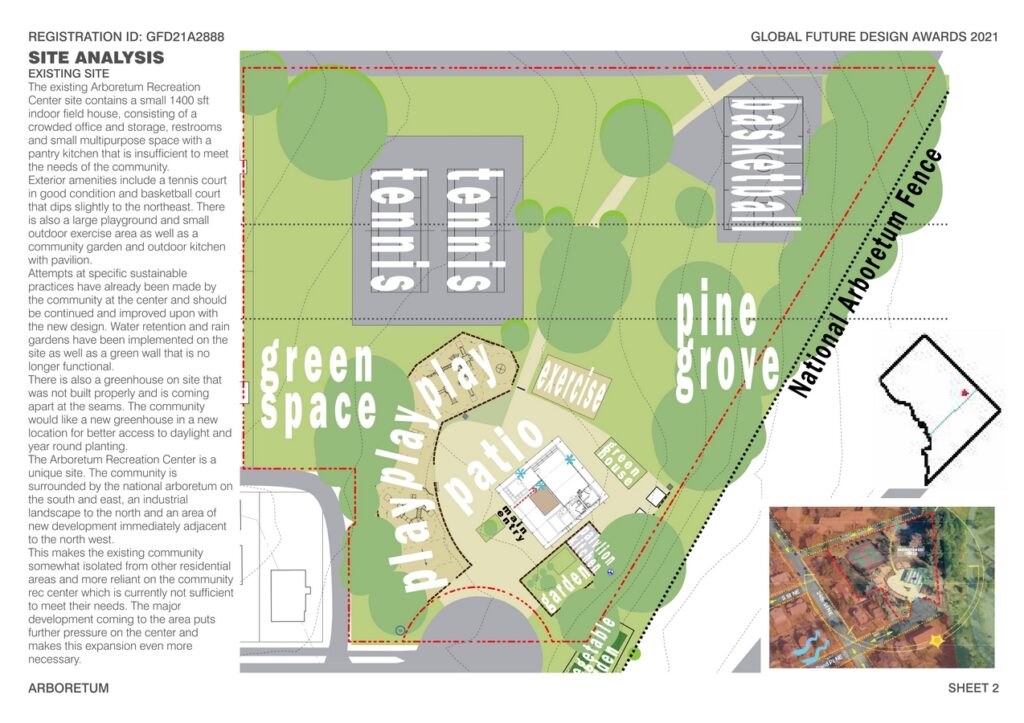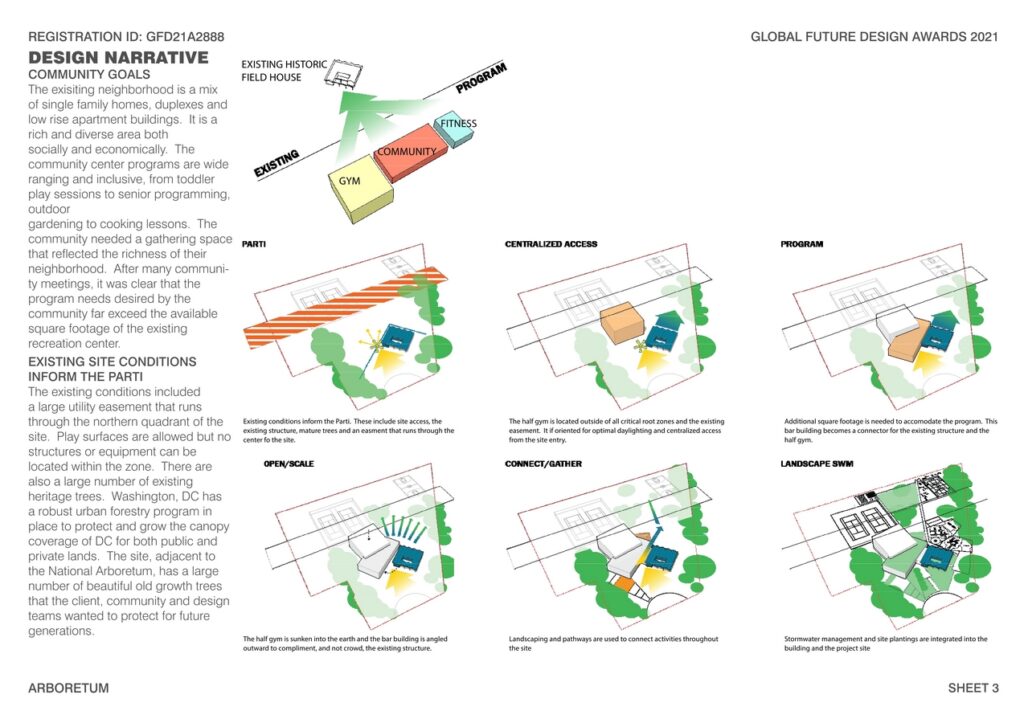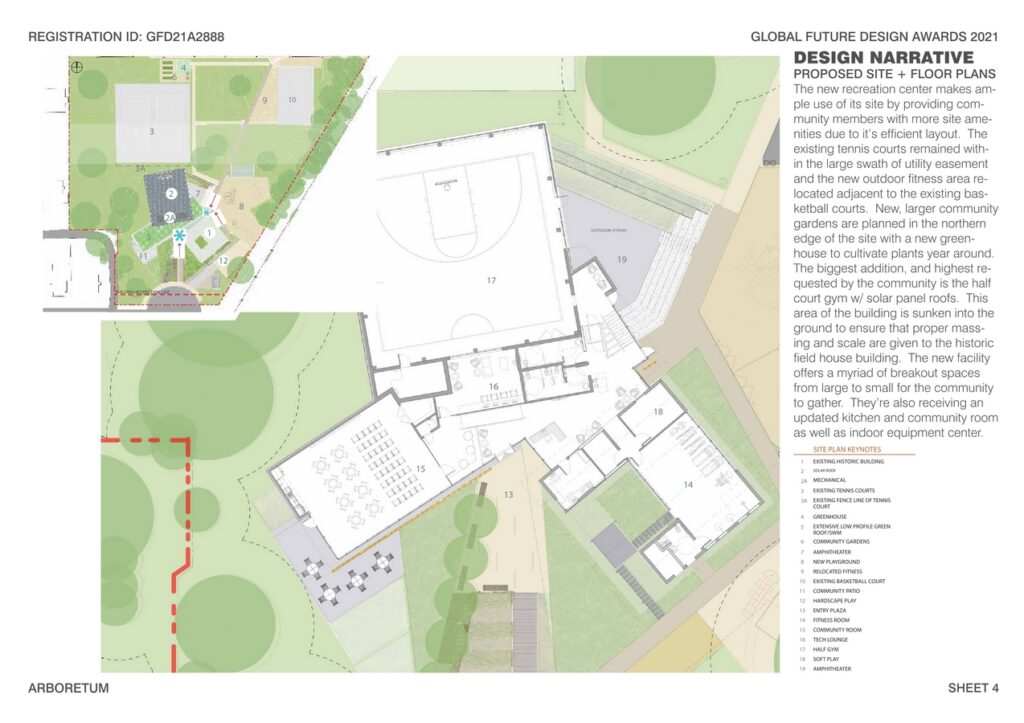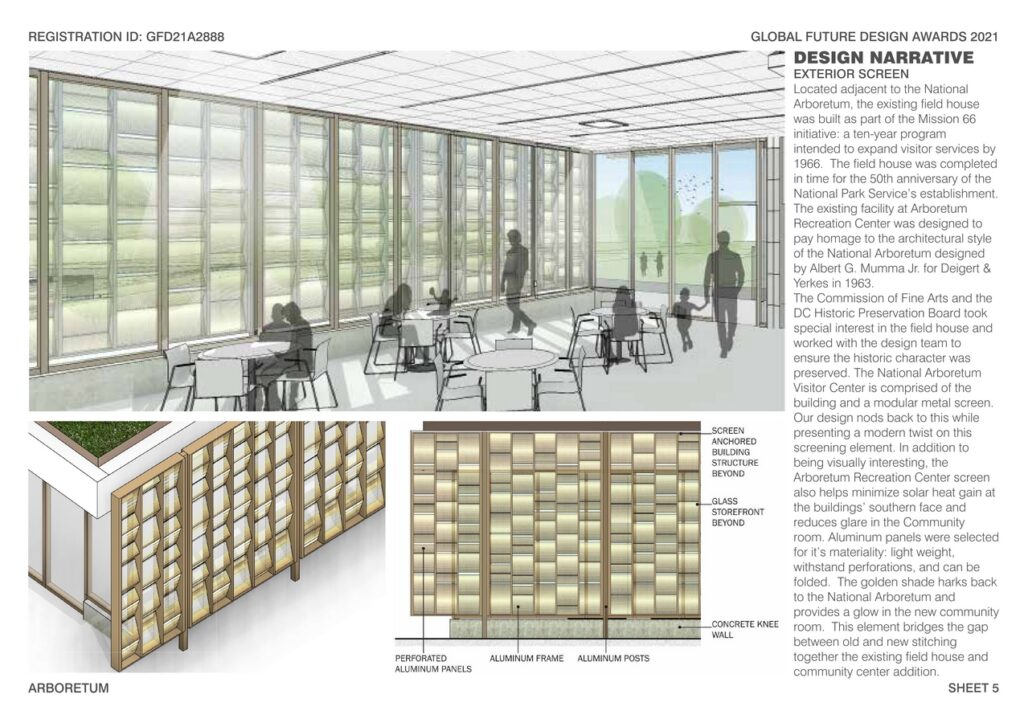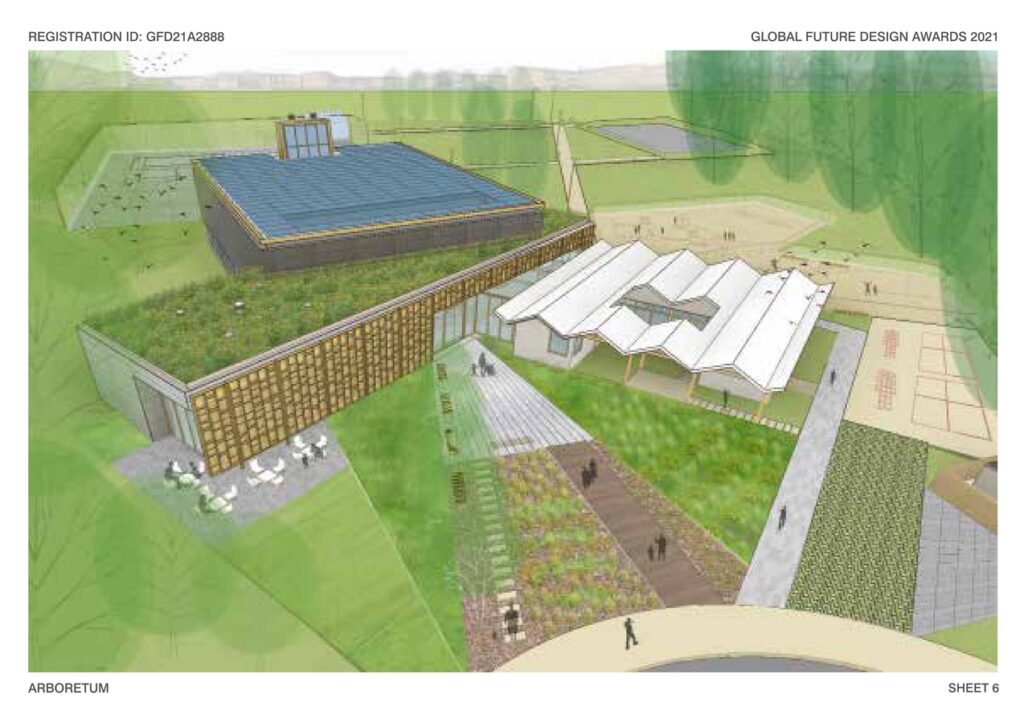There were three major factors contributing to the design of the new Arboretum Recreation Center: enhancing the community’s experience, creating a sustainable building, and reacting to the existing, historical Field House. The Arboretum Recreation Center melds these sometimes-conflicting concerns by an attention to adjacencies, reflections on the flow between interior and exterior and a constant, sometimes playful, push and pull between the old and new. A glass connector piece abuts the existing Field House, allowing a daylit lobby and a subtle touch on the historic building while also blurring the lines between interior and exterior.
Global Future Design Awards 2022: Discounted Entries Open Now! Save $50
Super Early Discount – 20th October 2021 to 30th December 2021 – $199 = $149
🏆 Second Award
Global Future Design Awards 2021
Arboretum
Institutional Architecture Concept
Firm
ISTUDIO Architects
Architect/Designer
Rick Schneider
Design Team
ISTUDIO Architects
Location
Washington, DC
Country
United States
Photographer/Copyright
©ISTUDIO Architects
A metal screening element brings a sculptural touch to the project in addition to shading the community room and framing the entrance to the center. The partially sunken community room allows for access to an ample patio, continuing the physical and visual access to exterior spaces as a theme. Throughout the building. This partially sunken space also allows for a high ceiling which adds to the versatility and flexibility of the room as requested by the community. The Gym being recessed seven feet below grade allows us to expand to an exterior amphitheatre and maintain a connection to the exterior landscape while also creating the height needed for a solar chimney and not towering over the existing historic building. This gym is constructed of CLT, a sustainable wood construction method, adding to the green nature of the building while also bringing warmth to an otherwise often stark typology. Other features such as the green roof and solar panel array as well as rainwater retention add to the building’s sustainability.
By creating a building that plays with level changes and materiality we are able to enhance flexibility of space and find a harmony between the mid-century modern Field House and the New Addition. A homage to the adjacent Arboretum can also be found in the decision to create a flow between exterior and interior throughout the project and the metal screen brings a modern take to an existing formula. The design for the Arboretum Recreation Center fuses form, function, and sustainability.
Located adjacent to the National Arboretum, the existing field house weas built as part of the Mission 66 initiative, a ten-year program intended to expand visitor services by 1966, in time for the 50th anniversary of the Park Service’s establishment. The field house at the Arboretum Recretion Center was designed to pay homage to the architectural style of the National Arboretum designed by Albert G. Mumma Jr. for Deigert and Yerkes in 1963.
The Commision of the Fine Arts and the DC Historic Preservation Board took special interest in the field house and worked with the design team to ensure the historic character was preserved. The National Arboretum Visitor Center is compromised of the building and a modular metal screen. Our design nods back to this while presenting a modern twist on this screening element. In addition to being visually interesting the Arboretum Recreation Center screen also helps minimize solar heat gain at the building’s southern face and reduces glare in the community room. This element bridges the gap between old and new stitching together the existing field house and the community center addition.
The new addition and modernization are designed to be an innovative green building with ample natural daylighting, natural ventilation, and durable eco-friendly materials. The master plan integrates architecture and landscape to provide space that are multi-faceted, functional, and beautiful. ISTUDIO coordinated with HPO and CFA on renovations and upgrades to the existing “Mission 66” historic building and its relationship to the new addition to ensure that the two interact to create a more dynamic whole. The updated recreation center will provide multi-functional, vibrant spaces where the community can engage in recreation, meetings, and various fitness and enrichment classes. Biophilic design is intertwined with strategies like daylighting, passive design, natural ventilation, solar power, and stormwater management, as well as the gym being made out of Cross Laminated Timber (CLTs) to deliver a high-performance building that is ready to meet Net Zero Energy requirements.
Registrations open… Don’t miss the opportunity to win with your visionary projects.


